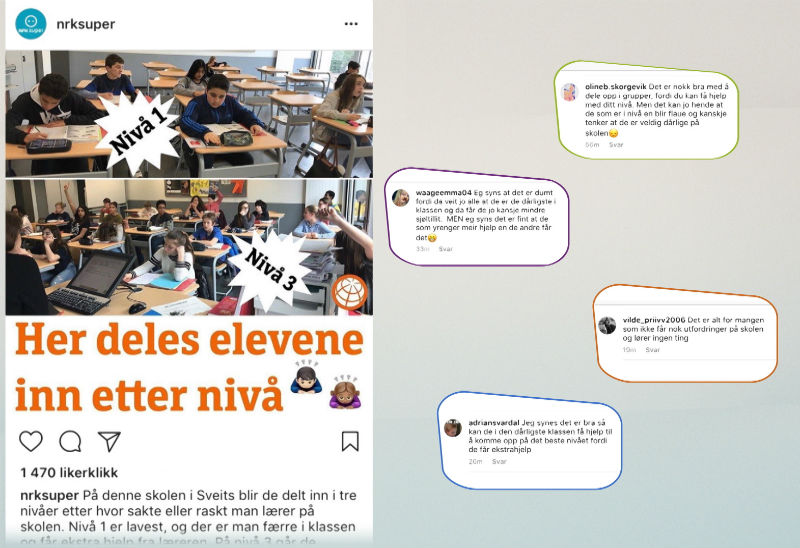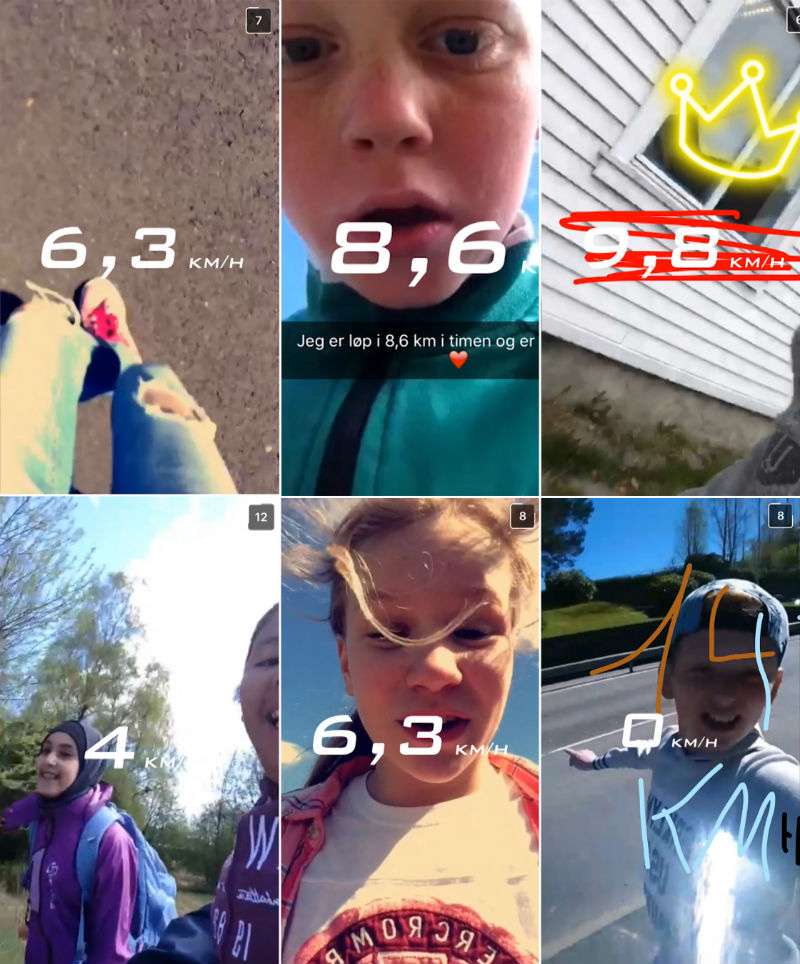The NRK Supernytt team bring news to children in Norway aged 8-12 on TV, online and social media platforms including Snapchat and Instagram.
NRK, the Norwegian state broadcaster, aims to “explain the world for the kids”, Frank Sivertsen, chief of staff at NRK Supernytt, told Journalism.co.uk. The team of 12 works to explain what is happening in Norway, covering the entire country, as well as telling stories from other parts of the world.
“The important thing for us is to cover issues like terrorism, refugees dying trying to come to Europe, to explain North Korea, and then there is a big case in Norway now with a famous police officer being charged with corruption – explaining difficult matters like that is one of the basic things we are doing.”
Reducing fear is one of the key aims of the stories Supernytt produces. Last year for example, two topics dominated their programme: the killer clowns, and the implications of Donald Trump’s election as the 45th president of the United States of America.
The team has also tackled difficult topics from alcoholism to sexual abuse, which have made an impact – after seeing a Supernytt story, two children have told their teachers they had been abused. “That means we have to do this regularly,” said Sivertsen.
Some 300,000 children between eight and 12 years old live in Norway, of which 80,000 are following Supernytt on Instagram, and 10,000 watch Snapchat stories from the team. Some 50,000 pupils watch Supernytt programmes at school every day from Monday to Friday, as teachers play them during breaks, and 10,000 unique viewers access the website daily.

The Supernytt app has been downloaded 100,000 times, and the team uses it to interact with the kids and ask questions. On Wednesday, 10 May, Kristin Granbo, video journalist and producer, Supernytt, was working on a story about schools in Switzerland dividing children in classes based on their grades, and asked what children in Norway thought about this system. By 10am, almost 20,000 people replied through the app, and their answers made it into the story about the school system to be aired the following day.
Asking children to share their experiences and thoughts about certain topics is common practice at Supernytt, and Granbo explained the Snapchat channel and Instagram are important tools to reach children all throughout the country. Replies sent through Snapchat or comments from Instagram often make it into stories, and the team always has one staff member reading through all the comments each day. “We see social as an opportunity to get some more voices,” she said.
“We do post on Facebook, but it's more to get a discussion going amongst the parents rather than the children. Same with Twitter, it’s about making them aware of things that we've made. But there are so many platforms and obviously it's up to each reporter to try to spread their content and do something different for each platform.”

A year ago, Supernytt also started using its own TV studio, after finding the NRK “adult news” studio too restrictive for children’s programmes. The team is now able to operate the studio on their own, without having to wait for the technicians or the make-up team. The new studio also allowed them to experiment with the format of their programmes, which used to be very similar to traditional news bulletins but now can closely resemble the content children are likely to watch.
“There are so many rules of what you can do in that [main] TV studio, and it's so polished and it’s not what children usually see on YouTube for example,” said Granbo.
Through its presence on Snapchat, Instagram and its own app, the Supernytt team has found new ways of engaging children with news, as using the format of a serious news anchor presenting the latest headlines would not work.
The children are also tough critics – they are very picky with their news, correcting any mistakes whenever applicable and sometimes complaining that they have already seen the stories published elsewhere and that Supernytt is “late”, explained Sivertsen.
“You learn a lot about this age group and about how to make better journalism later when you read the comments.
“Some 65 per cent of the nine year-olds in Norway are on Snapchat and the numbers are more or less the same on Instagram, and if we're not present on these platforms then we can't be relevant for the kids.”
- Watch Kristin Granbo share more about Supernytt's Snapchat work in her talk at Mojocon here.
Free daily newsletter
If you like our news and feature articles, you can sign up to receive our free daily (Mon-Fri) email newsletter (mobile friendly).
Related articles
- Journalists are happy to be disconnecting from platforms, should news organisations be worried?
- Protecting journalists on social media, with Valérie Bélair-Gagnon
- What will your audience want in the future?
- 15 free sources of data on the media industry
- Predictions for journalism 2024: social media platforms and strategies










